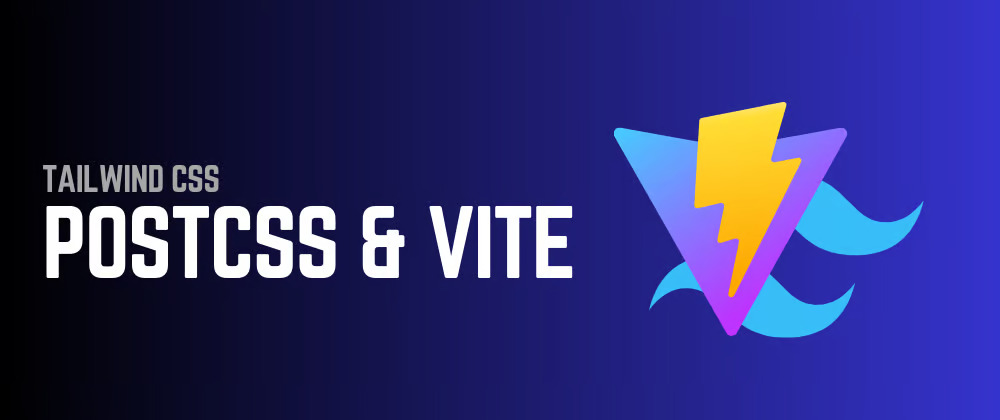Workflow and Internal Mechanics of CSS with PostCSS and Vite
 Raghvendra Misra
Raghvendra Misra
In modern web development, tools such as Vite and PostCSS are essential for optimizing CSS, particularly within frameworks like React. This article explores the setup and optimization of CSS using PostCSS plugins like Tailwind CSS and AutoPrefixer within a project powered by Vite.
Setting Up Your Project
To begin, setting up your project involves installing necessary packages such as Tailwind CSS and AutoPrefixer, alongside configuring Vite. Vite, known for its rapid build speed, utilizes configuration files (vite.config.js) where you specify how CSS should be processed and bundled.
npm install vite tailwindcss autoprefixer postcss
Writing CSS in JSX Components
Once configured, CSS is integrated directly into JSX components. You can import CSS files either module-by-module for each component or globally within the main component of your codebase. The method of importation determines whether these files are processed during Vite's build process.
Understanding Vite's Build Process
Commands such as npm run dev or npm run build initiate Vite's build process. Vite scans JSX files for imported CSS files; only those explicitly imported are processed. This underscores the importance of import statements in managing CSS dependencies.
PostCSS and Its Role
PostCSS acts as a framework that processes CSS using plugins. When encountering imported CSS, PostCSS creates an Abstract Syntax Tree (AST) of the CSS file, analyzing its structure based on configurations specified in its own postcss.config.js file.
// postcss.config.js
module.exports = {
plugins: {
tailwindcss: {},
autoprefixer: {},
},
};
Leveraging PostCSS Plugins
PostCSS executes plugins via child_process modules in Node.js. For instance, when processing Tailwind CSS, PostCSS directs the AST to Tailwind's entry point. This entry point allows Tailwind to analyze the AST, specifically targeting the classes utilized within JSX components.
The Distinction Between Scripts and Commands
In web development workflows using tools like Vite and PostCSS, it’s crucial to distinguish between scripts and commands:
Scripts: Defined within the package.json file under the "scripts" field, scripts are executable commands written in JavaScript. They are run using npm or yarn commands (npm run script-name). Examples include npm run dev or npm run build, which trigger predefined tasks such as starting a development server or bundling the application for production.
// package.json
{
"scripts": {
"dev": "vite",
"build": "vite build"
}
}
Commands: Commands are direct executable instructions often used in the terminal or command prompt. Unlike scripts in package.json, commands like npx tailwindcss init is executed directly in the terminal where init is actual standalone command of the tailwindcss package which can be executed without any prefix like npm locally when installed locally. They perform specific operations associated with the corresponding tool or package without requiring npm or yarn prefixes.
Understanding this distinction is crucial for managing dependencies effectively and optimizing the build process in web development projects.
Configuring CSS Bundling with Vite
import { defineConfig } from 'vite';
import react from '@vitejs/plugin-react';
export default defineConfig({
plugins: [react()],
css: {
postcss: './postcss.config.js'
}
});
The vite.config.js file in Vite plays a pivotal role in determining how CSS is bundled and served. Options include:
- Extract (
extractset to true): Bundles CSS separately and includes it in the markup via<link>tags, reducing runtime overhead but increasing network requests.
// vite.config.js
css: {
devSourcemap: true,
postcss: './postcss.config.js',
preprocessorOptions: {
css: {
extract: true
}
}
}
- Inject (
injectset to true): Dynamically injects CSS into the<head>of the document during build time using<style>tags, reducing network requests but increasing runtime processing.
// vite.config.js
css: {
devSourcemap: true,
postcss: './postcss.config.js',
preprocessorOptions: {
css: {
inject: true
}
}
}
- Code Split (
codeSplitset to true): Dynamically loads CSS when its corresponding component is rendered, optimizing performance by reducing server and browser overhead.
// vite.config.js
css: {
devSourcemap: true,
postcss: './postcss.config.js',
preprocessorOptions: {
css: {
codeSplit: true
}
}
}
Conclusion
Understanding these processes empowers us developers to optimize CSS bundling effectively using Vite and PostCSS. By integrating these tools, we developers streamline CSS management, enhance application performance, and ensure efficient delivery of styles across different frameworks.
In upcoming articles, we'll delve into JavaScript bundling and provide a comprehensive overview of how applications built on modern frameworks are bundled and shipped. Stay tuned for further insights into optimizing your web development workflow!
Subscribe to my newsletter
Read articles from Raghvendra Misra directly inside your inbox. Subscribe to the newsletter, and don't miss out.
Written by

Raghvendra Misra
Raghvendra Misra
A tech enthusiast, aspiring full-stack developer, and avid music lover. From my beginnings as a UI/UX designer, I've delved deeper into the world of development, driven by a passion for crafting seamless digital experiences. When I'm not immersed in code, you'll often find me exploring new melodies on my guitar or discovering fresh beats to fuel my creativity. Join me as I navigate the intersection of technology and art, constantly seeking new ways to innovate and inspire.